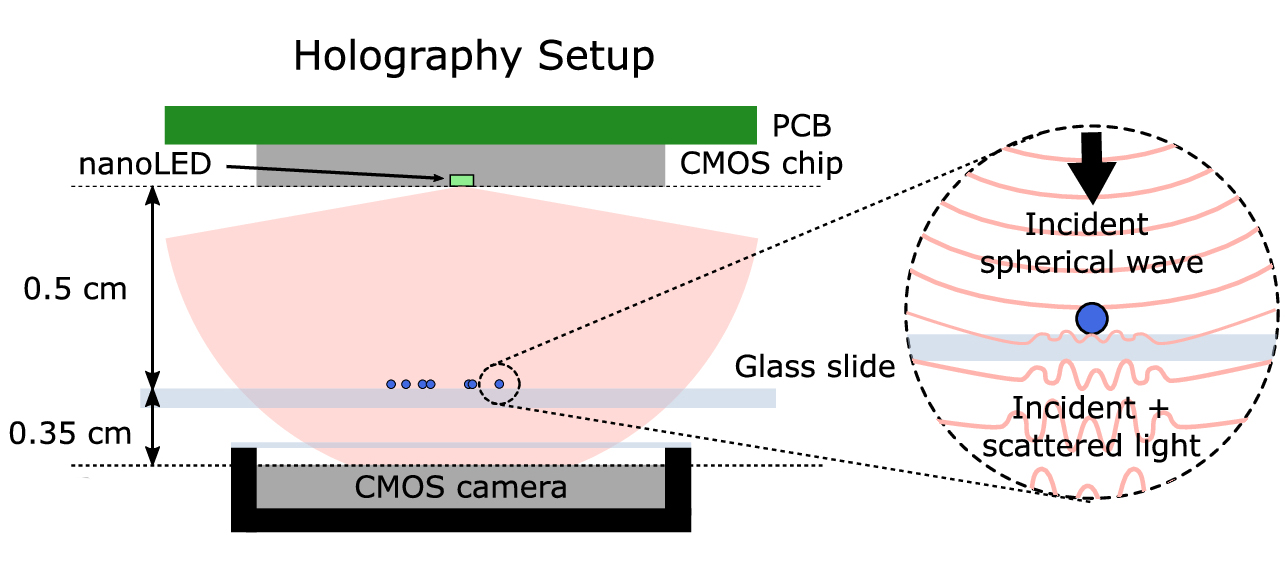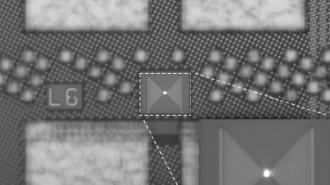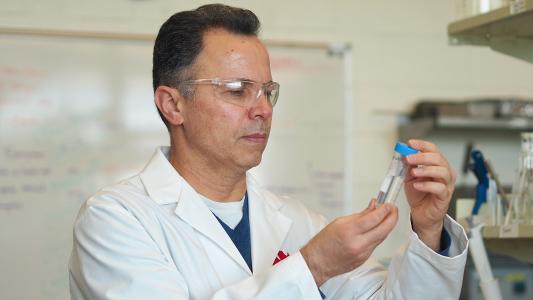Scientists at MIT’s Singapore-based research center have built the world’s smallest LED — and then used it to create the world’s smallest holographic microscope, a breakthrough that foreshadows a future in which smartphones could do high-res microscopy.
Chips of light: In most of our devices, currents of electrons travel across microchips, where tiny features called “transistors” act as on/off switches controlling their flow — but electronic microchips aren’t the only kind.
There are also photonic microchips, which manipulate the flow of tiny particles of light. Those chips have several advantages over electronic ones, including faster data transmission, less heat generation, and a smaller size.
Holographic microscopes are cheaper, more compact, and more portable than optical microscopes.
One thing holding photonic microchips back has been the need for the light source to usually come from off the chip, which reduces the chips’ efficiency and limits their scalability.
To solve this issue, researchers at the Singapore-MIT Alliance for Research and Technology (SMART) developed the world’s smallest light emitting diode (LED) — less than a millimeter wide.
In February 2023, they reported that they’d integrated their tiny LED into a microchip alongside other photonic and electronic components. Now, they’ve demonstrated another application of the LED, creating the world’s smallest holographic microscope.
How it works: Lensless holographic microscopes work differently than optical microscopes, the kind you likely experimented with in science class.
While optical microscopes have lenses that bend light to magnify whatever is being studied, the holographic kind illuminate objects in a way that produces measurements a computer algorithm can use to construct a high-res, three-dimensional image.
SMART’s holographic microscope has a resolution of 20 microns — about one-fifth the diameter of a strand of hair.
A holographic microscope’s primary components are a light source, a microchip, and an image sensor, while an optical microscope requires light, lenses, and mirrors. This allows holographic microscopes to be cheaper and more compact, as well as more portable.
To create the world’s smallest holographic microscope, the SMART team not only integrated their LED into the microchip, but also developed a novel algorithm to improve its resolution to 20 microns — about one-fifth the diameter of a strand of hair.

Looking ahead: The researchers say their tech is small enough that it could be used to turn smartphone cameras into holographic microscopes simply by modifying their chips and software.
These kinds of handheld microscopes could have countless uses. Healthcare workers could study human tissues with them, for example, while farmers could whip out their smartphones to study the cells of their plants on the spot.
Meanwhile, SMART’s tiny LEDs could have even more uses beyond microscopy, both in photonic microchips and perhaps in light-controlled medical implants, which have been used to control hunger, relieve pain, and more in animal studies.
“Our breakthrough represents a proof of concept that could be hugely impactful for numerous applications requiring the use of micro-LEDs,” said lead author Iksung Kang.
We’d love to hear from you! If you have a comment about this article or if you have a tip for a future Freethink story, please email us at [email protected].






